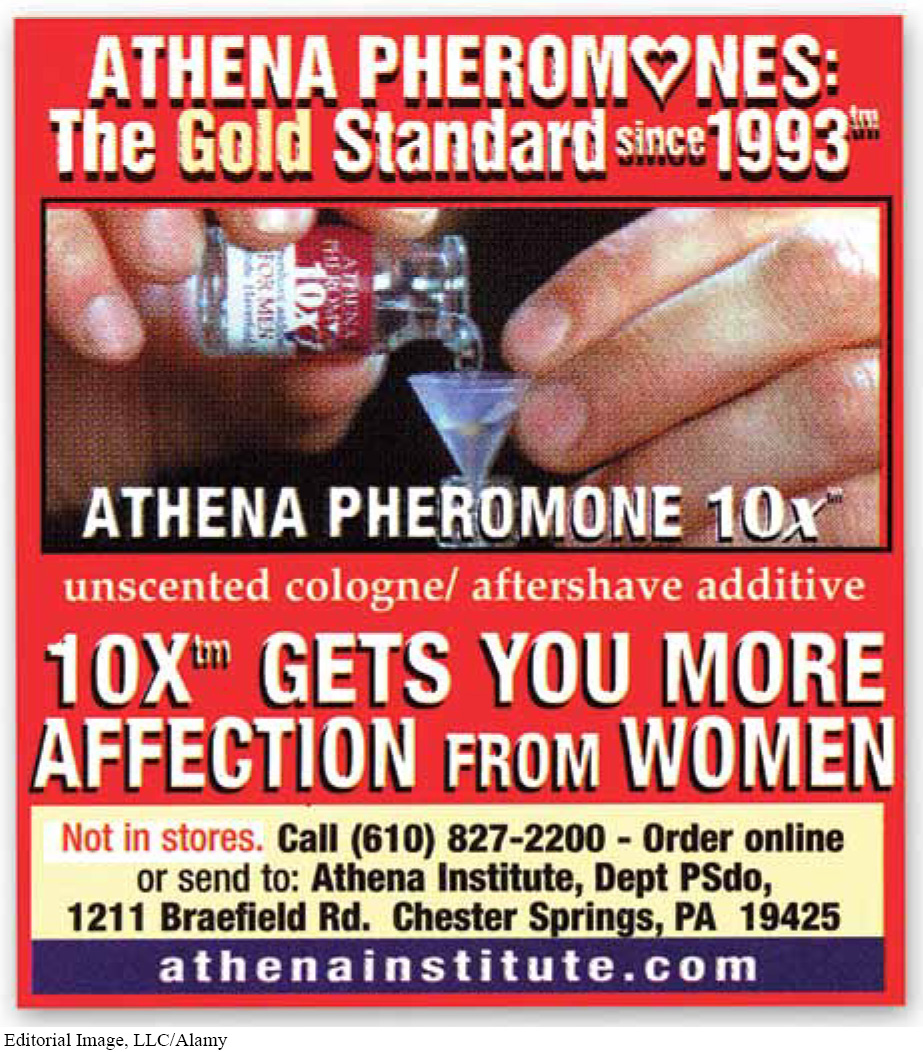Question
24.6
Q: What are sex pheromones? Sex pheromones, such as those produced by female gypsy moths, are chemical messengers released into the environment to announce to males, over a wide area, that a female is ready to mate.
Question
24.7
Q: Do humans produce them? The jury is out on this question. In 1971, data were published suggesting that among women living in college dormitories, pheromones, probably released from underarms, could shorten or lengthen the reproductive cycle in other women (see Section 25-7). But, despite ample evidence of sex pheromones in other species, the evidence of their existence in humans is still hotly debated.
Question
24.8
Q: What about the claims made in other studies? A study published in 2002 claimed that human pheromones could increase the sexual attractiveness of women to men. In the double-blind, placebo-controlled study, one group of women had a purported human sex pheromone added to their perfume, while women in a control group had a placebo. The women then recorded, over the next three months, their “socio-sexual” behaviors—including kissing, dating, sexual activity, and male approaches—which were then compared with recorded observations from the same women prior to receiving the pheromone or placebo. The results? More than three times as many pheromone users as placebo users (74% vs. 23%) experienced an increased frequency of socio-sexual behaviors. The researchers concluded that the pheromone acted as a sex attractant.
Question
24.9
Q: Can we be certain of the claims of just one study? The double-blind and placebo-controlled aspects of this study represent important attempts at making a rigorous test of the authors’ hypothesis. But the study has been criticized on several grounds. The authors tested only a small number of women (n = 36), within a limited age range (27.8 ± 6.7 years), over only a three-month period. Perhaps more importantly, they did not disclose in their published report the chemical preparation added to the perfumes. Additionally, one of the study’s authors synthesized the proprietary chemical and currently markets it for profit. And re-analyses of the results challenge their significance. So while the results do suggest that there may be something in the air, we probably ought to wait for a bit more experimental evidence before drawing any strong conclusions.


